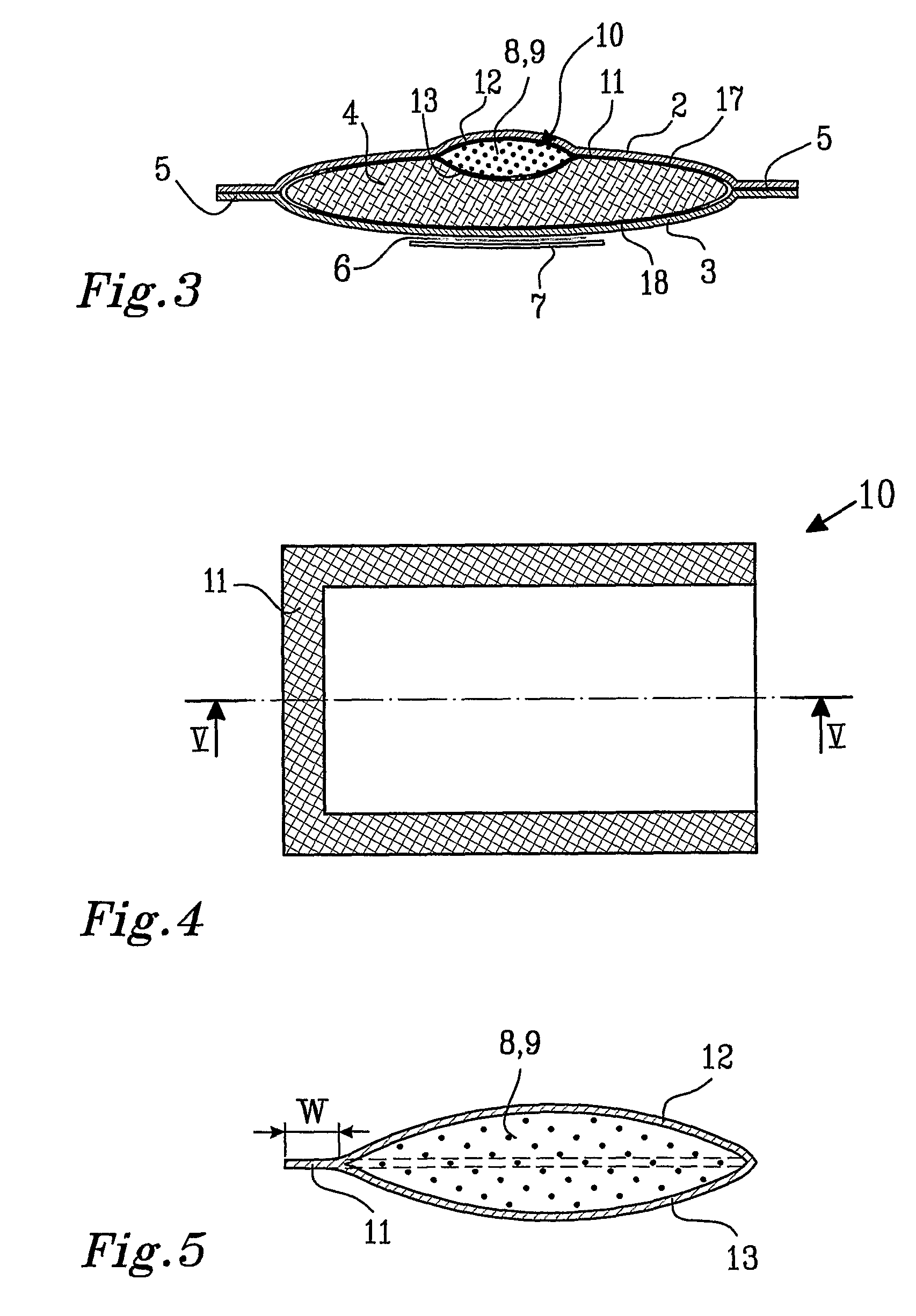Water-Vapour Impermeable Carrier Member for Use in an Absorbent Article
a carrier member and water-vapour technology, applied in the field of absorbent articles, can solve the problems of individual susceptible, difficult to meet the requirements of the product, and the disruption of the normal microbial flora, and achieve the effects of efficient and less expensive, product properties retained, and less risk
- Summary
- Abstract
- Description
- Claims
- Application Information
AI Technical Summary
Benefits of technology
Problems solved by technology
Method used
Image
Examples
Embodiment Construction
[0052]FIGS. 1 and 2 show an embodiment of a sanitary napkin 1 which comprises a liquid permeable topsheet 2, a liquid impermeable backsheet 3 and an absorbent structure 4 enclosed there between. The absorbent structure 4 having a first side 17 and a second side 18. The liquid permeable topsheet 2 can be composed of a nonwoven material, e.g. spunbonded, meltblown, carded, hydroentangled, wetlaid etc. Suitable nonwoven materials can be composed of natural fibers, such as woodpulp or cotton fibres, manmade fibres, such as polyester, polyethylene, polypropylene, viscose etc. or from a mixture of natural and manmade fibres. The topsheet material may further be composed of tow fibres, which may be bonded to each other in a bonding pattern, as e.g. disclosed in EP-A-1 035 818. Further examples of topsheet materials are porous foams, apertured plastic films etc. The materials suited as topsheet materials should be soft and non-irritating to the skin and be readily penetrated by body fluid, ...
PUM
 Login to View More
Login to View More Abstract
Description
Claims
Application Information
 Login to View More
Login to View More - R&D
- Intellectual Property
- Life Sciences
- Materials
- Tech Scout
- Unparalleled Data Quality
- Higher Quality Content
- 60% Fewer Hallucinations
Browse by: Latest US Patents, China's latest patents, Technical Efficacy Thesaurus, Application Domain, Technology Topic, Popular Technical Reports.
© 2025 PatSnap. All rights reserved.Legal|Privacy policy|Modern Slavery Act Transparency Statement|Sitemap|About US| Contact US: help@patsnap.com



